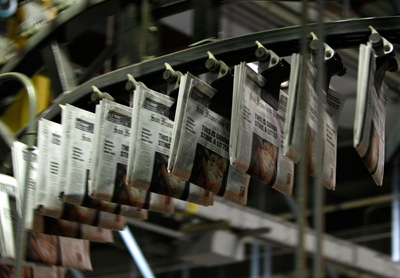
What’s wrong with this picture? Today the Pulitzers were handed out for journalism. The newspaper business, as you may have heard, is in complete meltdown, trying to figure out how to compete in the age of the Internet.
A paragraph in the Editor & Publisher story on the event in New York was enough to drop a jaw or two:
After the lists were passed out, and those in attendance rushed to spread the news via cell phone, laptop and, in some cases, old-fashioned phones down the hall, Gissler noted that this year’s journalism submissions, at 1167, had been down somewhat from last year’s 1225. He also stated that between 15% and 20% of entries included some kind of online component.
It’s quite possible that Pulitzer administrator Sig Gissler meant this tale to show just how big the Internet has become in the newspaper industry. And if this were, say, 1997, the fact that one out of every 5 or 6 entries to the most prestigious award in journalism had an online component would’ve been impressive. In 2008, however, it’s just a sad commentary. (By the way, if you want to see a winning entry with a significant online component, try this one from Concord, New Hampshire)
Meanwhile, the Star Tribune did not, as many had hoped, win an award for its coverage of the I-35W bridge collapse. I am reminded, however, of a fascinating column that Politics in Minnesota boss Sarah Janececk wrote in December, which suggested that the shutout would play big at MnDOT’s headquarters.
But harassing MnDOT employees is not the only objection MnDOT has to the Star Tribune’s bridge collapse coverage. The Department maintains that the Star Tribune has been playing fast and loose with lots of facts in many of its stories. So, MnDOT has been keeping a file documenting every fact that it deems the Star Tribune has gotten wrong. My sources tell me the file has become inches high…and that MnDOT plans to make sure the Pulitzer Prize Board receives it.
(Photo: Justin Sullivan/Getty Images)
